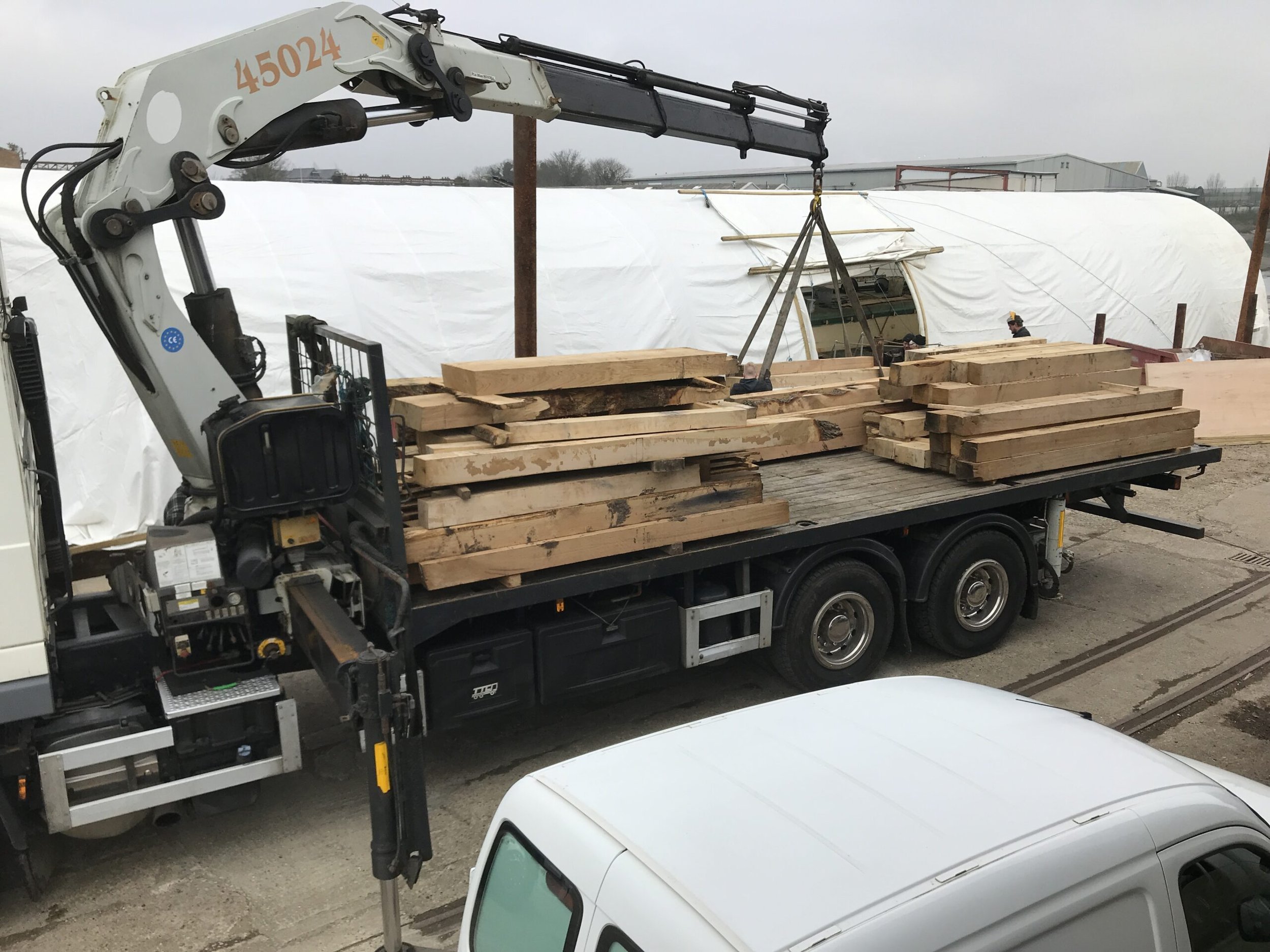Under cover
March 2021
A drooping bow - not good
As soon as Raybel dried out on the blocks of the dry dock it was possible to look along her bottom length and see the bow had a droop of about 4 inches.
In March the shipwright team of Tim Goldsack (TG ) and John Hall (JH) started the restoration work by propping up the bows and then welding a shelf onto the swim of the dry dock for an 80 ton jack. The jack was used to lift the bow, which was then propped on hardwood chocks. By then the shipwright crew had expanded with the arrival of assistant shipwright Josh Goldsack, a young man who has been working on barges since he was 8 years old.
Stripping out
Moving inside, the crew started cutting away the ceiling and a five foot piece of the steel keelson, to allow access to the bow framing. This clearly showed where a hard life of river work and the occasional collision had damaged the bow, and how generations of ship repairers had responded. As well as the centreline droop the frames had splayed and the bond between deck beams and frames was compromised. The rails above the bow were removed to better assess the state of the beam ends beneath
Inside the hull more ceiling was removed, requiring the dismantling of the luxurious captain’s cabin created in the 1980’s, while JH used thin plywood to make templates for oak needed to make new frames. The shipwrights visited the woodyard in Edenbridge and placed an order for £6000 worth of best English. At the same time an order for deck planking was placed with one of the few timber yards that has the proper certification to import tropical hardwoods. In this case Opepe from West Africa. One of our directors used to work for the Forestry Stewardship Council and there will be more on this subject soon.
Rails off
With Raybel dry and a scaffolding in place the shipwrights removed the rest of the rail. The massive rigging chocks take the strain of the mast rigging and were fitted by Tim and Jon about 15 years ago so they knew how heavy they were. The covering boards were removed and then the wales and two deck planks were cut out to reveal the beam ends, frames and carlins. Most of the frames will require new tops grafting on due to 100 years of rot. Many of the midships steel carlin tops are also badly corroded and will need cutting back and new pieces welding in. Tim reports that the starboard side planking is better than expected but many small patches of rot will need replacing.
Acroprops against the dry dock have been used to push the sides of the bow back into shape so they can be secured to the new apron which sits inside the stem and tied with new deck beams.A delivery of ships nails, handmade in Oxford by the last known supplier, was received. These modest 6 inch spikes are ruinously expensive but modern tech has yet to provide a more effective fixing than a plain steel square spike, crown rose head, heavily galvanised inserted with several heavy blows from a 5 pound maul. On Monday the oak arrived and the job of cutting frames to partner the existing ones can begin.



















